15 Things Families Did Together On Weeknights In The ’60s That We Need Back
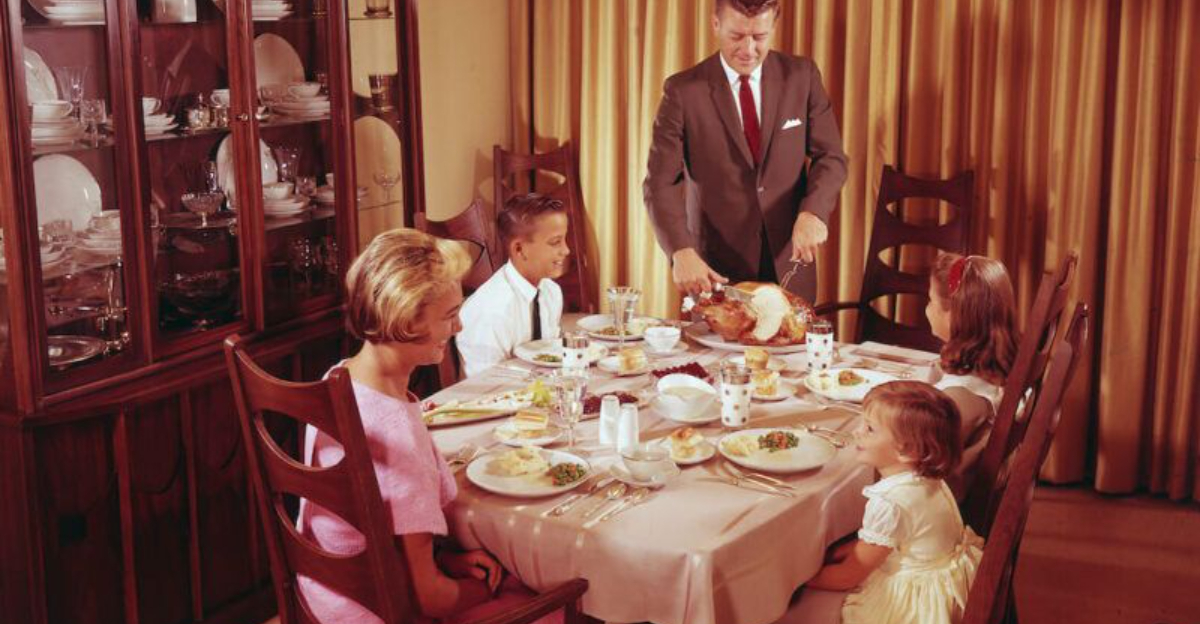
Growing up in the 1960s meant family time wasn’t just scheduled—it was sacred. In a world without smartphones, binge-watching, or social media scrolls, evenings were all about togetherness.
After dinner, the living room transformed into the heart of the home, where laughter echoed over board games, TV variety shows, and homemade popcorn. We didn’t need apps to entertain us—just a deck of cards, a good story, or a spontaneous living-room dance party.
Those weeknights were filled with real connection, the kind that builds memories you carry for a lifetime. Whether it was helping mom in the kitchen, dad reading the newspaper out loud, or everyone tuning in to watch Ed Sullivan, the sense of unity was unmatched.
So let’s rewind the clock a bit. Here’s a heartfelt look at 15 beloved family traditions from the ’60s that brought us closer—and might just be worth bringing back today.
1. Gathering Around the Dinner Table
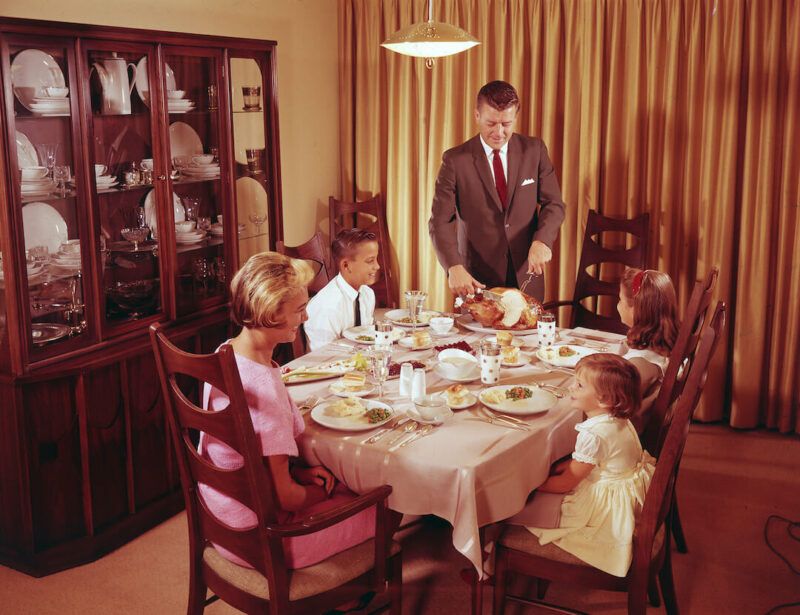
Meatloaf Mondays and pot roast Wednesdays were more than just meals in our house—they were sacred family gatherings! Every night at 6 PM sharp, my father would announce “dinner’s ready” and we’d scramble to our assigned seats at the oak table my grandfather built.
Nobody dared bring a newspaper or any distraction to the table. We passed dishes family-style, asked about each other’s days, and lingered long after the food was gone. Mom’s rule was simple: everyone helps prepare and everyone helps clean up.
The conversations we had during those dinners shaped my worldview. I learned about politics, family history, and proper etiquette all while passing the mashed potatoes. Sometimes we’d laugh until milk came out our noses, other times we’d debate serious topics, but we always connected.
These consistent family meals weren’t just about food—they were about belonging. Research now confirms what ’60s families knew instinctively: regular family dinners improve children’s vocabulary, academic performance, and emotional well-being. Plus, homemade meals were healthier than today’s fast-food alternatives!
2. Watching TV Shows as a Family Event

Tuesday nights were sacred in our household—Ed Sullivan night! We’d huddle together on our avocado-green sofa, balancing TV trays on our laps, utterly mesmerized by the variety show that brought America’s living rooms together. The Beatles, Elvis, comedy acts—we experienced cultural milestones collectively.
Unlike today’s individualized streaming, television in the ’60s was a shared experience. With just three networks, programming decisions were family affairs that required negotiation and compromise. My sister and I would lobby hard for our favorites, learning valuable lessons in diplomacy.
Commercial breaks became mini-intermissions for bathroom runs or grabbing homemade popcorn. Dad would adjust the rabbit ears for better reception while Mom prepared snacks in the kitchen, calling out, “What did I miss?” when she returned.
Television wasn’t background noise but the centerpiece of evening entertainment. We discussed plot developments, laughed together at Lucy’s antics, and debated who would win next week’s Bonanza showdown. These shared cultural touchpoints gave us common language and experiences. No one was scrolling on a second screen or disappearing into separate rooms with personal devices—we were truly present together.
3. Playing Board Games and Card Games
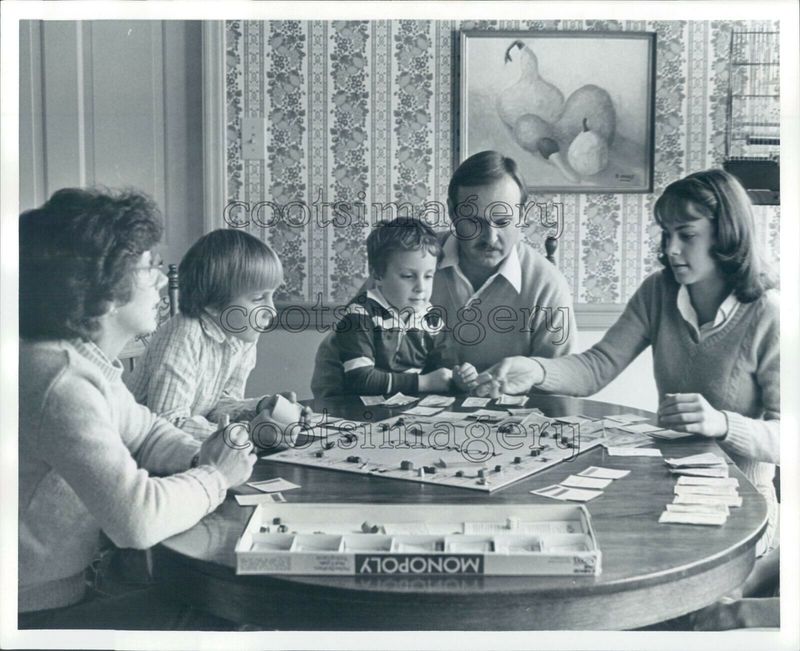
“You sank my battleship!” My brother’s dramatic wail would echo through our living room during our Thursday game nights. The dining table transformed into a battlefield of plastic pieces, colorful cards, and friendly competition that taught us more than we realized.
Monopoly marathons sometimes lasted for days, with the board carefully preserved between sessions. We’d bargain fiercely over Park Place and laugh hysterically when someone landed on our hotel-laden properties. Clue taught us deductive reasoning while Sorry helped us learn to lose gracefully (well, sometimes).
Card games were equally cherished in our household. Grandma taught us canasta, hearts, and gin rummy, using these games to sharpen our math skills without us even noticing. Dad was notorious for his poker face during Go Fish, treating the simple children’s game with the seriousness of a Vegas tournament.
These analog entertainment options fostered critical thinking, strategic planning, and social skills. We learned to read facial expressions, negotiate deals, and think several moves ahead. Most importantly, these games created a level playing field where age didn’t matter—I’ll never forget the pride of beating my father at chess when I was just nine years old.
4. Reading Aloud to Each Other
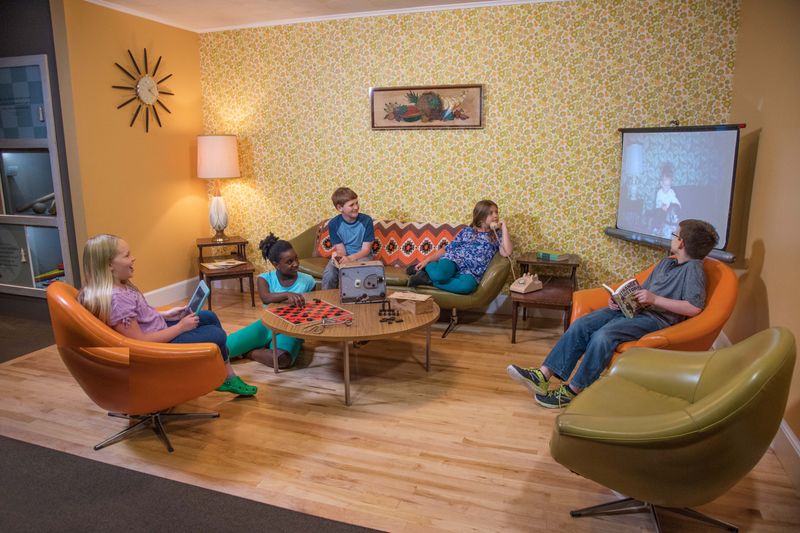
“Just one more chapter, please!” we’d beg as Mom closed the book at the most suspenseful moment. Those nightly reading sessions remain some of my most treasured childhood memories. Our family would gather in the living room after dinner, taking turns reading passages from classic novels or the latest Hardy Boys mystery.
Dad had different voices for each character in Charlotte’s Web, making Wilbur’s adventures come alive in our imaginations. Even my teenage brother, who pretended to be too cool for family activities, would get pulled into the stories, eventually volunteering to read the most dramatic sections.
These reading sessions weren’t just entertainment—they were gateways to discussion. We’d pause to talk about difficult words or debate characters’ motivations. Current events often connected to themes in the books, sparking conversations about values and ethics without feeling like lectures.
Family reading created a shared literary universe of inside jokes and references that bonded us together. It expanded our vocabularies, improved our public speaking confidence, and instilled a lifelong love of reading. In a world before audiobooks and podcasts, these sessions taught us the power of storytelling and the magic of using our own imaginations rather than having everything visually presented to us.
5. Making Music Together
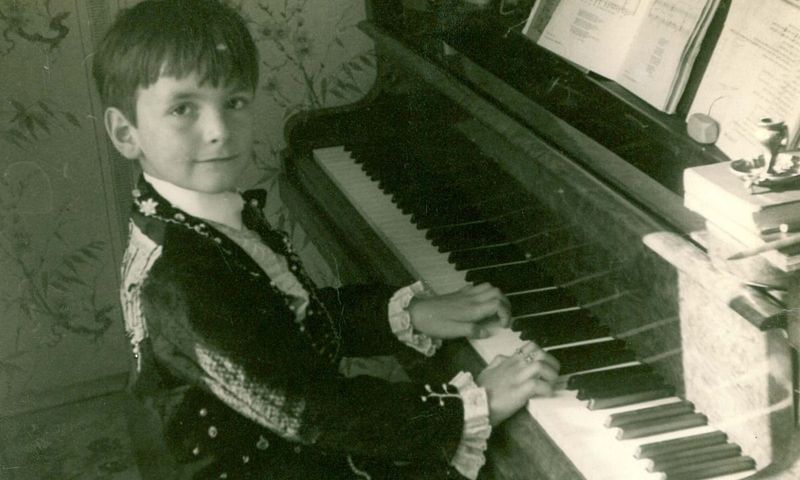
The out-of-tune piano in our living room wasn’t just furniture—it was the heart of our family’s impromptu weeknight concerts! My father would sit down after dinner and pound out “Heart and Soul,” inviting anyone passing by to join in for a duet. What we lacked in talent, we made up for in enthusiasm.
Singing around the piano was a regular evening ritual in many ’60s homes. We’d harmonize on folk songs, Broadway tunes, and holiday carols regardless of the season. Mom kept a stack of sheet music in the bench, and we’d take turns selecting songs and distributing percussion instruments to the youngest family members.
Uncle Joe would bring his guitar on visits, teaching us simple chords and patience as we fumbled through “Tom Dooley” and “Blowin’ in the Wind.” These sessions weren’t about perfection but participation. Nobody worried about recording or performing for others—we simply enjoyed the process of creating sounds together.
Making music as a family built confidence, coordination, and appreciation for the arts. It connected generations through shared songs and taught us to work together toward harmony—literally and figuratively. In today’s world of earbuds and isolated listening, we’ve lost the interactive, creative joy of family music-making that exercised both our brains and our bonds.
6. Working on Crafts and DIY Projects
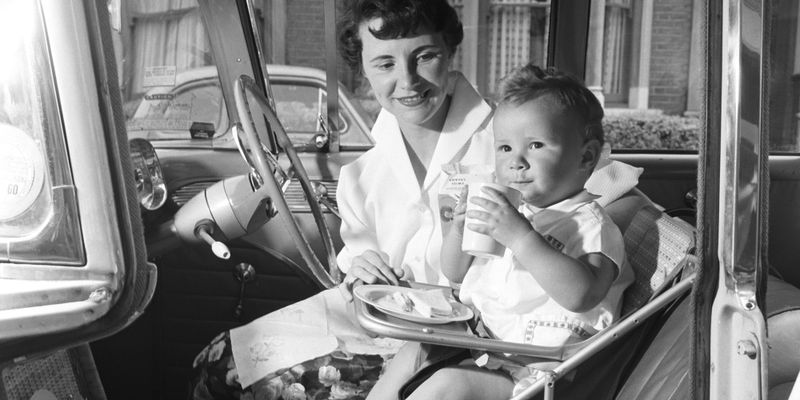
Glue, scissors, and creativity transformed our kitchen table into a bustling family workshop three evenings a week! My earliest memories include Dad teaching us to build birdhouses while Mom showed us how to knit scarves that started wide and mysteriously narrowed as our attention wandered.
These weren’t Pinterest-perfect crafts with expensive supplies and professional results. We used whatever materials were available—empty toilet paper rolls became binoculars, old greeting cards transformed into new ones, and popsicle sticks constructed everything from picture frames to jewelry boxes. The focus was on process rather than perfection.
Seasonal projects marked the calendar—leaf collecting in fall, hand-printed Christmas cards in winter, seed starting in spring. Dad would spread newspaper across the table before announcing, “Tonight we’re learning how to repair a lamp!” These practical skills sessions taught us electrical basics, simple woodworking, and household maintenance.
Family crafting fostered creativity, problem-solving, and fine motor skills. We learned patience watching glue dry and resilience when projects failed. Most importantly, these activities taught us that making things together was more satisfying than buying them ready-made. In our throwaway culture, we’ve lost the satisfaction of creating and repairing as a family unit—skills that built both useful objects and meaningful connections.
7. Stargazing and Backyard Exploration
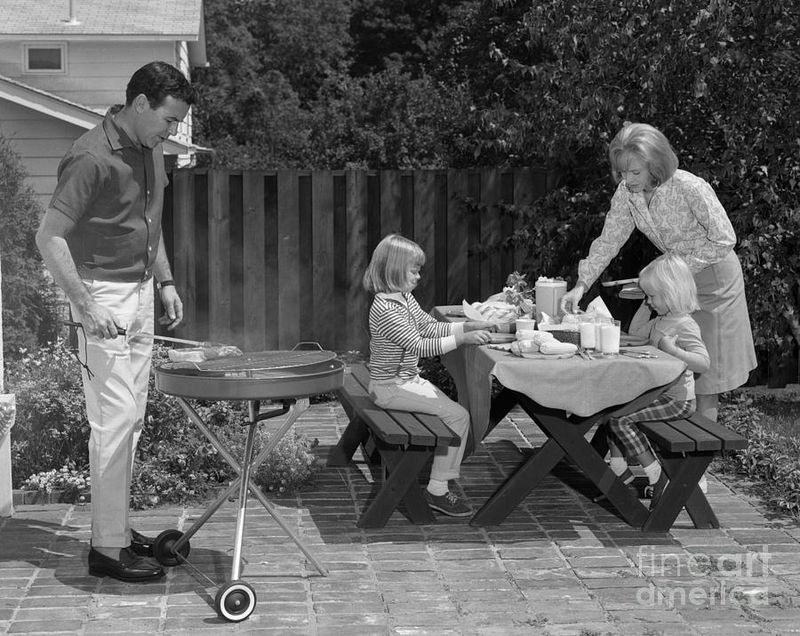
“That’s Orion’s Belt!” I’d proudly announce, pointing skyward from our backyard blanket spread on dewy grass. Summer evenings in the ’60s often found families like ours lying on our backs, connecting celestial dots and sharing mythology under the stars.
Armed with a simple star chart torn from the Sunday newspaper, we’d identify constellations and track the moon’s phases without expensive telescopes or smartphone apps. Dad taught us to spot satellites moving across the night sky, tiny man-made specks that seemed magical to our young minds. The Space Race made astronomy personal and patriotic for families across America.
Backyard exploration wasn’t limited to nighttime. Weeknight nature walks around the neighborhood became treasure hunts for interesting rocks, unusual leaves, or lucky four-leaf clovers. Mom kept field guides on the bookshelf, encouraging us to identify birds, insects, and wildflowers we encountered.
These simple outdoor adventures cost nothing but delivered priceless lessons in observation, patience, and wonder. We learned the rhythms of nature and our place within it. Today’s overscheduled families rarely pause to notice seasonal changes or celestial events together. We’ve traded natural wonder for digital distraction, missing opportunities to bond over the shared experience of discovery right outside our doors.
8. Planning Weekend Adventures Together
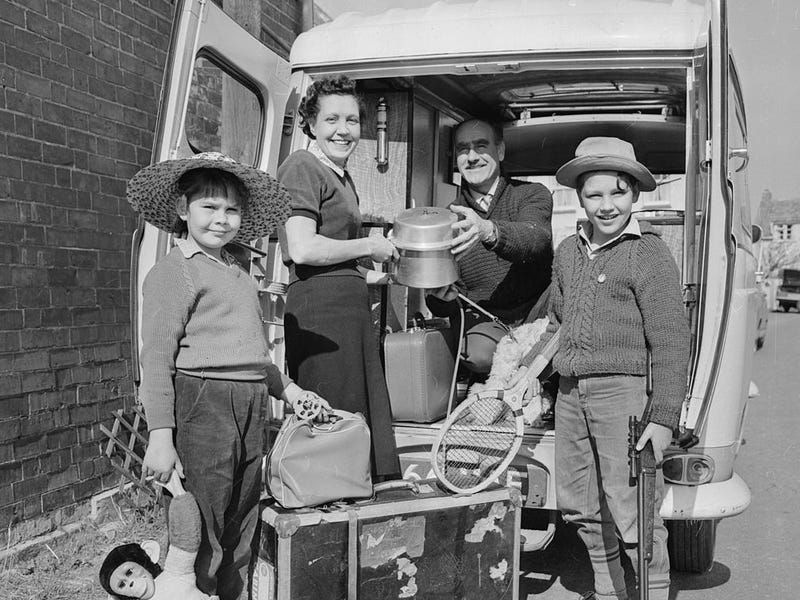
Wednesday nights were special in our house—that’s when we’d spread maps across the living room floor and plan our weekend adventures! Dad would pull out the dog-eared road atlas while Mom balanced the family budget, determining how far we could reasonably travel on a tank of gas.
These planning sessions became educational games, teaching us geography, math, and decision-making. We’d calculate distances between landmarks, estimate travel times, and debate the merits of visiting the natural history museum versus the state park. Each family member got a vote, and we learned to advocate for our preferences while respecting others’ interests.
The anticipation was often as exciting as the adventures themselves. We’d research destinations in encyclopedia volumes, prepare scavenger hunt lists for the journey, and pack picnic provisions. Mom would assign us each responsibilities—I was the official navigator by age ten, proudly highlighting routes on AAA TripTiks.
These collaborative planning sessions taught us valuable life skills: budgeting, time management, compromise, and the joy of shared anticipation. Today’s families often outsource their adventure planning to digital assistants or follow influencer recommendations rather than creating personalized journeys together. We’ve lost the bonding experience of spreading out physical maps, dreaming collectively, and building consensus about how to spend our precious family time.
9. Telling Stories and Family Histories

“Tell us about when you were little, Grandpa!” That simple request would launch hours of spellbinding tales around our living room. Storytelling was evening entertainment before Netflix, connecting generations through shared narratives that shaped our family identity.
The elders would recount depression-era hardships, wartime experiences, and immigration journeys that helped us understand our roots. These weren’t history lessons from textbooks but personal accounts that made the past tangible through the voices of people we loved. Dad’s stories about walking five miles to school seemed suspiciously uphill both ways, but we hung on every exaggerated detail.
We children contributed our own tales—playground triumphs, neighborhood mysteries, and imaginary adventures. Parents listened with genuine interest, validating our experiences and helping us develop narrative skills. Family legends emerged from these sessions, gaining embellishments with each retelling until they became part of our collective mythology.
These oral history exchanges taught us family values, resilience in the face of challenges, and our place in a continuing story. Studies show children who know their family narratives develop stronger identities and greater resilience. Today’s families rarely carve out time for intergenerational storytelling, losing precious opportunities to transmit wisdom, history, and values through the simple act of sitting together and saying, “Let me tell you about the time when…”
10. Writing and Receiving Letters Together
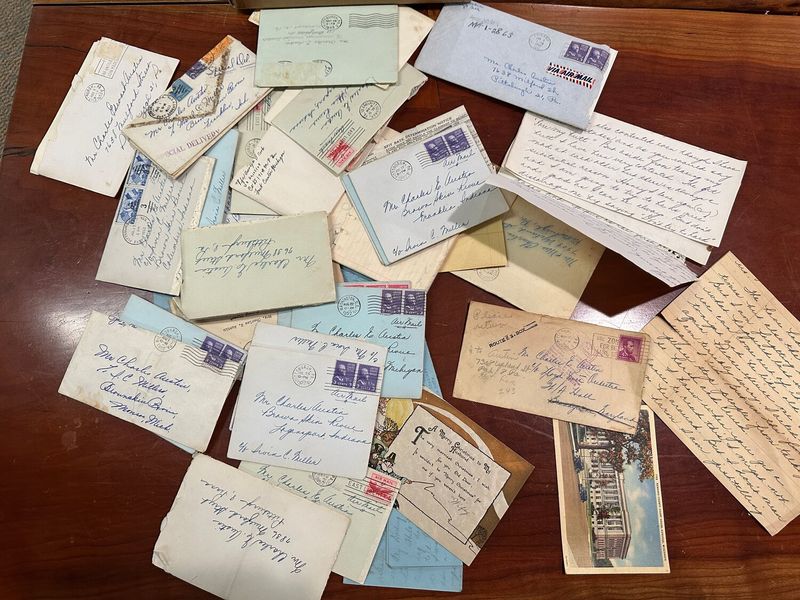
Mail call was a highlight of our weekday evenings! Dad would bring home the day’s delivery, and we’d gather around as Mom read Aunt Mildred’s latest adventures aloud. In the ’60s, personal correspondence wasn’t just communication—it was family entertainment.
Sunday evenings often found us at the dining table for family letter-writing sessions. Mom would distribute stationery while Dad sharpened pencils for the younger kids. We’d update distant relatives on school achievements, neighborhood news, and family milestones. Even before I could properly write, I’d contribute crayon drawings to the family dispatches.
These letter-writing rituals taught us composition skills, penmanship, and the importance of maintaining connections. We learned to express gratitude through thank-you notes and empathy through get-well cards. The anticipation of replies gave us lessons in patience that today’s instant communication has eliminated.
Receiving mail addressed specifically to us children was thrilling—birthday cards with crisp dollar bills, postcards from traveling relatives, or responses to our carefully composed fan letters to favorite television stars. These tangible connections to the wider world expanded our horizons while strengthening family bonds. In our era of texts and emails, we’ve lost the collaborative family activity of creating and sharing physical correspondence that once connected households across distances both geographical and generational.
11. Family Cooking and Baking Sessions
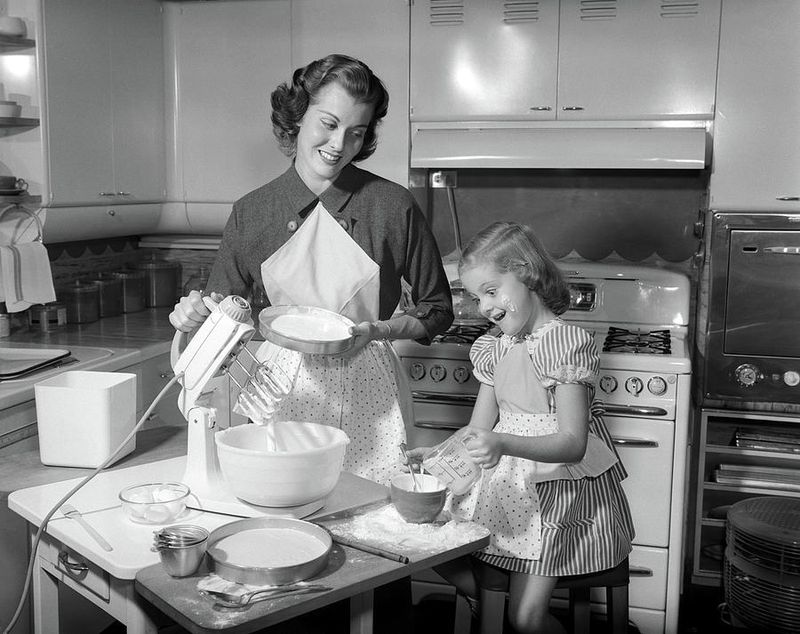
Flour dusted every surface of our kitchen on Friday nights—official family baking night! My earliest memory is standing on a chair at age four, wearing an apron cut down from Mom’s, solemnly tasked with adding chocolate chips to cookie dough one by one while my older siblings handled more complex duties.
These culinary adventures weren’t just about creating food but passing down heritage. Dad taught us his mother’s secret spaghetti sauce recipe, complete with theatrical flourishes when adding the mysterious “pinch of this.” Mom showed us how to knead bread dough until it felt “just right”—a tactile knowledge impossible to learn from cookbooks alone.
Family cooking sessions naturally divided labor by age and ability. Teenagers measured ingredients while younger kids stirred and tasted. We learned fractions through doubling recipes and chemistry through the magic of baking powder. Mistakes became opportunities for problem-solving—too much salt meant learning how to compensate with other ingredients.
Beyond practical skills, these kitchen collaborations taught us patience, precision, and the satisfaction of creating something delicious together. The shared anticipation as we peeked through oven windows bonded us as tightly as the results we enjoyed. Today’s families often outsource meal preparation to takeout services or microwave separate meals, missing the rich sensory experiences and teamwork that kitchen collaboration once provided.
12. Home Improvement Projects

“Hold the flashlight steady!” Dad’s voice would echo from under the sink as I played my crucial role as junior plumber’s assistant. Weeknight home maintenance in the ’60s wasn’t just chores—it was family bonding through shared accomplishment and skill-building.
Painting bedrooms became family projects where everyone had assigned roles based on height and dexterity. Mom taught us to prepare walls properly while Dad demonstrated cutting-in techniques around windows. Even wallpapering—that notorious relationship test—became manageable when approached as a family unit with plenty of laughter at inevitable misalignments.
Seasonal maintenance created rhythms to our year. Spring meant everyone helped wash windows and screens; fall involved weatherproofing together. We learned to use tools properly, understand household systems, and appreciate the effort behind a well-maintained home. The pride of pointing to a finished project and saying “I helped with that” built confidence that extended beyond home repair.
These collaborative projects taught practical skills increasingly absent in today’s specialized service economy. More importantly, they demonstrated that families could tackle challenges together, combining different strengths to achieve common goals. When something broke, our first instinct wasn’t to replace it or call a professional—it was to gather around, assess the problem, and fix it together, learning valuable lessons about resourcefulness and resilience along the way.
13. Listening to Radio Programs
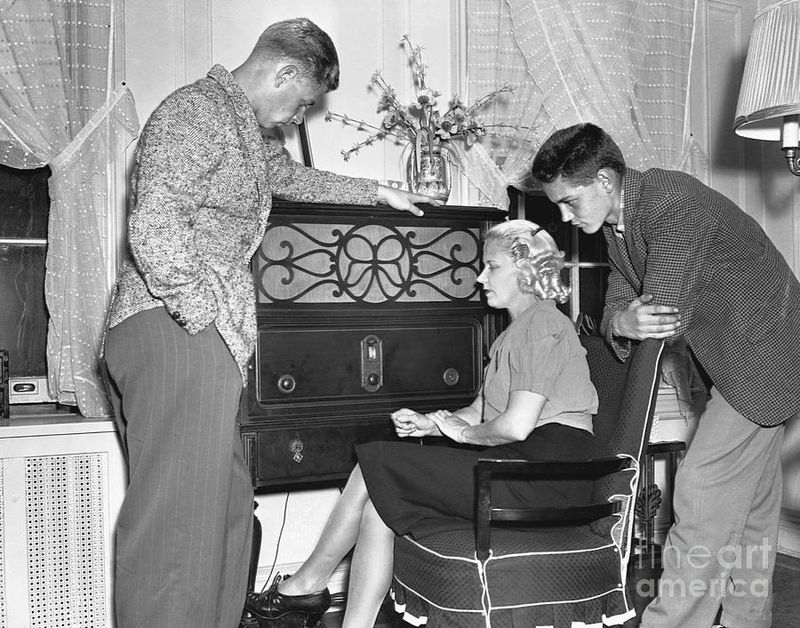
The crackling sound of our Philco radio warming up signaled the start of our favorite weeknight ritual. Before television dominated every household, families like ours would gather around the radio, creating images in our minds far more vivid than any screen could provide.
Mystery programs were our family favorites—we’d turn the lights low and huddle close, gasping collectively at dramatic sound effects. Dad would playfully cover the youngest children’s ears during the scariest parts while Mom prepared hot cocoa for commercial breaks. These shared listening experiences sparked conversations about plot predictions and character motivations.
News broadcasts became interactive educational experiences. When world events were discussed, parents would pull out the family atlas, showing us exactly where these faraway happenings were occurring. We’d ask questions and debate issues together, developing critical thinking skills and awareness of the wider world.
Music programs introduced us to everything from classical compositions to emerging rock and roll. We’d dance around the living room to upbeat tunes or sit quietly absorbing beautiful melodies. Unlike today’s personalized playlists through individual earbuds, radio listening was communal—we experienced the same sounds simultaneously, creating shared cultural touchpoints. These audio adventures required attention and imagination, engaging our minds actively rather than passively consuming visual entertainment.
14. Family Talent Shows
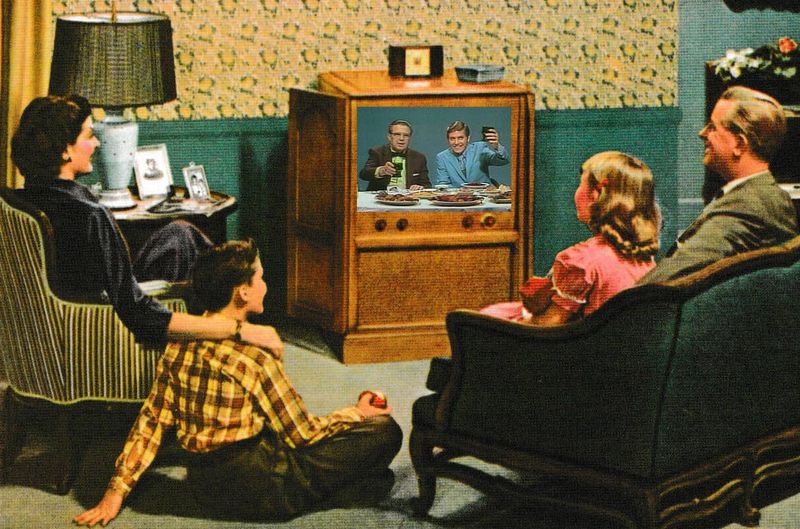
Our living room transformed into a makeshift theater every other Friday night! The fireplace hearth became a stage, couch cushions formed the audience seating, and a wooden spoon wrapped in aluminum foil served as our microphone for the beloved Smith Family Talent Spectacular.
Everyone participated regardless of actual talent level. Dad would perform corny magic tricks that never quite worked, Mom recited poetry she remembered from school, and we kids would perform everything from harmonica solos to tumbling routines practiced all week in the backyard. My sister’s puppet shows featuring socks with button eyes were particular family favorites.
These amateur performances built confidence in public speaking and creative expression. We learned to applaud each other’s efforts rather than judge technical perfection. Grandparents were often invited as special guests, bringing refreshments and occasionally joining acts with their own surprising talents.
The beauty of these homemade entertainment nights was their accessibility—no special equipment or skills required, just willingness to participate. They created inside jokes and signature performances that became part of family lore.
Today’s children often consume professional entertainment rather than creating their own, missing opportunities to develop performance confidence and supportive audience skills. These simple shows taught us that entertainment doesn’t need to be polished or expensive to bring joy—it just needs heart and willing participants.
15. Maintaining Prayer and Spiritual Practices
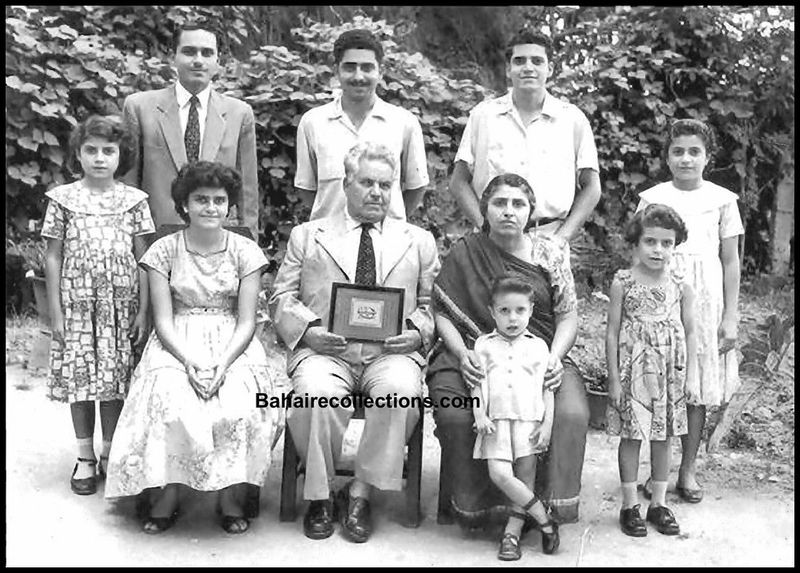
“Bless us, O Lord…” The familiar words of grace before dinner marked the beginning of our evening spiritual practices. Regardless of specific religious traditions, many families in the ’60s incorporated faith into their weeknight routines, creating sacred moments amidst ordinary days.
Evening prayers were often tailored to children’s understanding while addressing real family concerns.
We’d take turns adding personal intentions—for upcoming tests, neighborhood friends facing challenges, or gratitude for specific blessings. These shared spiritual moments taught us to articulate hopes and concerns while developing empathy for others’ needs.
Bible stories or religious readings became interactive family discussions. Parents would relate ancient wisdom to our modern situations, making abstract concepts tangible through everyday examples. Even in non-religious households, many families practiced moments of reflection or gratitude that acknowledged something larger than themselves.
These spiritual practices weren’t confined to designated worship spaces but woven into home life. They provided consistent rituals during changing times and taught values through both words and actions. The simple act of gathering for shared devotion—whether formal prayers, meditation, or expressions of gratitude—created a foundation of stability and meaning.
In today’s fragmented schedules and diverse belief systems, many families struggle to maintain consistent spiritual practices together. Yet these traditions once provided children with moral frameworks, comfort during difficulties, and a sense of belonging to something transcendent.
